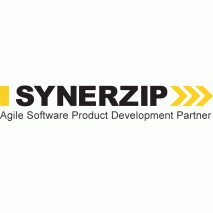Tableau Training In Chennai
Tableau Course In Chennai
Looking to master data visualization and boost your analytics career? 3RI Technologies offers the most comprehensive Tableau training in Chennai, designed for beginners and professionals alike. Our program covers everything from basic concepts to advanced dashboard creation, making it one of the most sought-after Tableau courses in Chennai. With hands-on projects, real-time case studies, and expert guidance, you’ll develop the skills to turn complex data into actionable insights. Whether you’re aiming to advance your career in business intelligence or data analytics, our Tableau course helps you achieve your goals with confidence and expertise.
Key Features
Course Duration : 8 Weeks
Real-Time Projects : 2
Online Live Training
EMI Option Available
Certification & Job Assistance
24 x 7 Lifetime Support
Our Industry Expert Trainer
We are a team of 10+ Years of Industry Experienced Trainers, who conduct the training with real-time scenarios.
The Global Certified Trainers are Excellent in knowledge and highly professionals.
The Trainers follow the Project-Based Learning Method in the Interactive sessions.
Tableau Training in Chennai Overview
Unlock the true potential of data with 3RI Technologies’ industry-focused Tableau training in Chennai. Our course is designed to help you master the essentials of data visualization, reporting, and analytics, providing you with real-world skills demanded by today’s businesses. Whether you are a beginner or an experienced professional, this Tableau course in Chennai will equip you with hands-on experience through practical projects and live case studies.
At 3RI Technologies, we emphasize interactive learning, offering comprehensive coverage of Tableau fundamentals, dashboard development, data blending, and advanced analytics features. Our expert trainers bring industry insights that make learning more relatable and practical. As part of the training, students work on multiple real-world projects to build a strong portfolio, preparing them for successful careers in business intelligence and data analytics.
Choosing our Tableau training in Chennai ensures you gain not just theoretical knowledge but also the confidence to tackle real-time data challenges. With flexible learning options, weekend batches, and placement assistance, we make it easier for you to balance learning with other commitments. Enroll today in the best Tableau course in Chennai and step into a future where your data skills open new doors of opportunity.
Key Features
- Job Assistance
- Flexible Timings
- Additional self-development session
- 24/7 Access & Support
- Real-time assignments & projects
- Certified Course
DURATION:
- 8 Weeks
PREREQUISITES:
- No Prerequisites, Basic knowledge of SQL is advantageous
WHO CAN JOIN THIS COURSE?
- Business Intelligence Professionals
- Data Science Professionals
- Business Analysts
Skills Required
- No Prerequisites for Tableau Certification Training.
- Basic knowledge of DBMS SQL is Advantageous.
Tableau Course Syllabus
Best in Class content by Leading Faculty & Industry Leaders in the form of Videos, Cases and Projects, Assignments and Live Sessions.
1. Business Intelligence Overview
- Introduction to Tableau
- Product Components
- Architecture
- Need of Data Visualization
- Data Connectors
- Data Model
- File Types
- Dimensions & Measures
- Show Me
- Installing Tableau
- Different Tableau versions and pricing
- Home Screen
- Workspace
- Look and feel of dashboards created in Tableau
- Joins Supported in Tableau.
2. Hierarchy
- Worksheet Options
- Heap Map
- Tree Map
- Highlight table
- Symbol Map
- Filled Map.
3. Scatter Plot
- Gantt Chart
- Bullet Graph
- Sorting-computed and manual
- Filters
- Normal
- Top
- Context
- Conditional
- Cascading-All values and only relevant values.
4. Data Source Filters
- User Filter overview
- Parameters
- Groups
- Sets Basic.
5. Constant Sets
- Computed Sets
- IN Members-Out Members
- Combined Sets
- Aggregated & non Aggregated Values
- Adhoc Calculations
- Types of Calculations (Basic, Table, LOD)
- Bins
- Difference Between (Groups, Sets, Bins)
- Calculated Fields
- ZN Function
- How to find No of occurrence of letters?
6. Date Functions
- How to find no of days to ship?
- how to find month
- Type Conversions
- Logical Functions
- IIF Function
- User Functions
- Table Calculations
- First()
- Last()
- Index()
- Rank()
- Rank Dense()
- Rank Modified
- Rank Percentile
- Rank Unique
- Running Average
- Windows Functions
- Conditional Coloring using windows functions
- Difference between Normal Aggregation & Windows Aggregations
- Quick Table Calculations – Compute Using Table Across-Pane Across Etc.
- Calculation Assistance
7. Table Calculations
- Running Total Difference
- Percentage Difference
- Percent of Total Percentile
- Moving Average
- YTD Total
- Compound growth Rate
- Rank Methods- “Competition, Modified Competition, Dense”
- LOD Calculations-Fixed LOD
- Include LOD
- Exclude LOD with examples
- Include
- Exclude LOD
- What is specified dimension & what is view, dimension
8. Page Shelf
- Analytics Window
- Constant Line
- Average Line
- Median with quartiles & Totals
- Model (Average with 95% CI, median with 95%, quartile, cluster)
- Custom (Reference Line, Reference Band, Distribution, Band) with examples
- Confidence Interval (CI)
- Clusters
- K-Means
- Clustering
9. Forecasting
- 4 Factors of forecasting (Trend, Seasonality, Cyclic Fluctuations, Residues/Noise)
- Forecast Options
- Forecast Models
- Additive
- Multiplicative
- Quality
- Trend Line
- Types (Linear, Exponential, Logarithmic, Polynomial)
- Options(Linear, Exponential, Logarithmic, Polynomial Degree)
- Box plot
- Dashboards
- Purpose of Dashboard
- Actions
- Actions-Filters
- Action-
- Highlight
- Action URL
- Select
- Hover
- Menu in Actions with examples
10. Device Preview
- Layout manager
- Layout Objects
- Horizontal Vertical
- Objects
- text
- Images
- Fixed and floating sheets
- Story
- Caption
- number
- dots, etc..
11. Data Blending
- Data Blending Example
- Cross-Database Joins
- Data Extracts.
12. API Integration With Tableau
- JavaScript For Embedded Analytics Using
13. Maps using Groups
- Dual axis maps
- YTD
- MTD
- QTD Calculations
- How to calculate Last Year Sales
- Current Year Sales
- Current Month & Last Month Sales
- Year over Year Change of Sales.
14. Advanced Visualizations
- Gant Chart
- Histogram
- Funnel Chart
- Traditional
- funnel chart
- Bump Chart
- Donut Chart
- Lollipop Chart
- Waterfall Chart
- Control Chart.
15. Tableau Online
- User Interface
- Publishing Workbooks
- Data Sources
- Scheduling
- Extract Refresh
- Creating Projects
- Creating Groups
- Creating Users
- Assigning Permissions to users
- Subscriptions of reports.
16. Tableau Online User Filter
- Data Source filters
17. Tableau with R Integration
- Installation of R & R Studio
- Installing packages in R studio
- Using libraries of Reserve()
- How to Start R Service
- Connecting Tableau With R
- Implementing the functions of tableau
- SCRIP_Int
- SCRIPT_Real
- SCRIPT_Bool
- SCRIPT_Str
- Predictions OF measure values using R With Tableau.

Claim your free expert counseling session today!

Do you want to book a FREE Demo Session?
Who can apply for the course?
- Any graduates who want to pursue their career in DBMS related Technology.
- BE / BTech / MCA passed aspirants to make their career in Tableau & BI.
- IT-Professionals who want to get career in Business Intelligence & Visualizations.
- Professionals from non-IT bkg, and want to establish in IT.
- Candidate who would like to restart their career after a gap.
- Database Developers for next level of their career.
Want an Expert Opinion?

Industry Projects
Learn through real-life industry projects sponsored by top companies across industries
- Project Implementation with Real-Time Scenario.
Dedicated Industry Experts Mentors
Receive 1:1 career counselling sessions & mock interviews with hiring managers. Further your career with our 300+ hiring partners.
I'm Interested in This Program

Our Clients







































Tableau Training Testimonials
What our students talks about us. If you were student of 3RI and wants to share your thought about us, kindly mail or call us.
